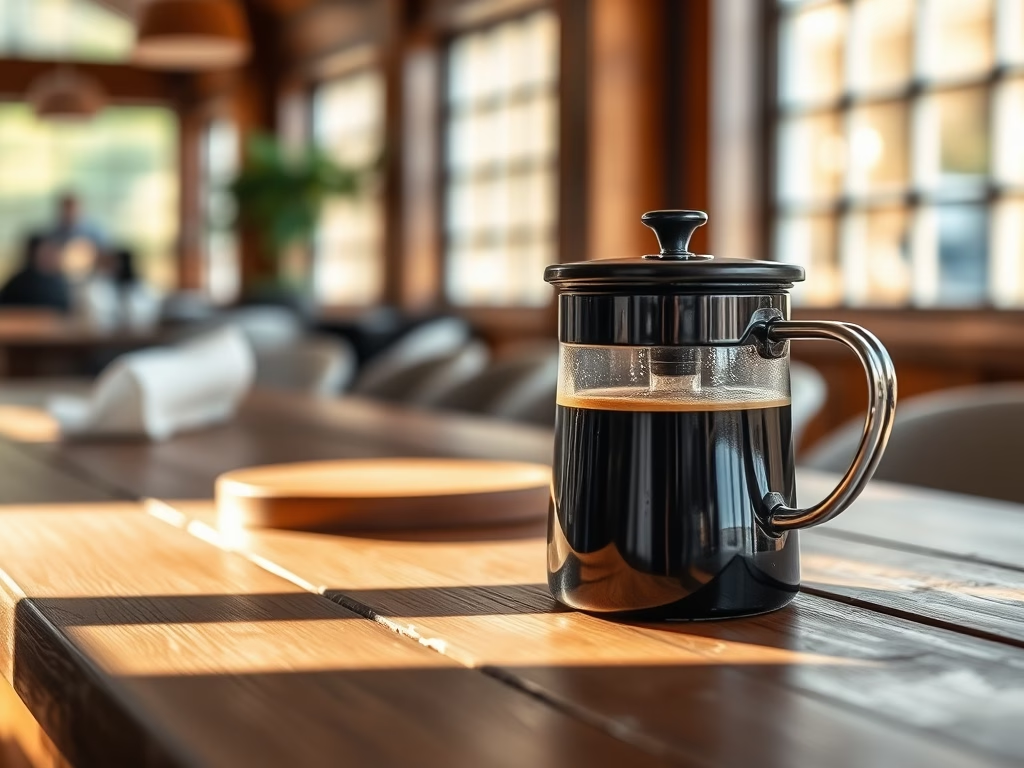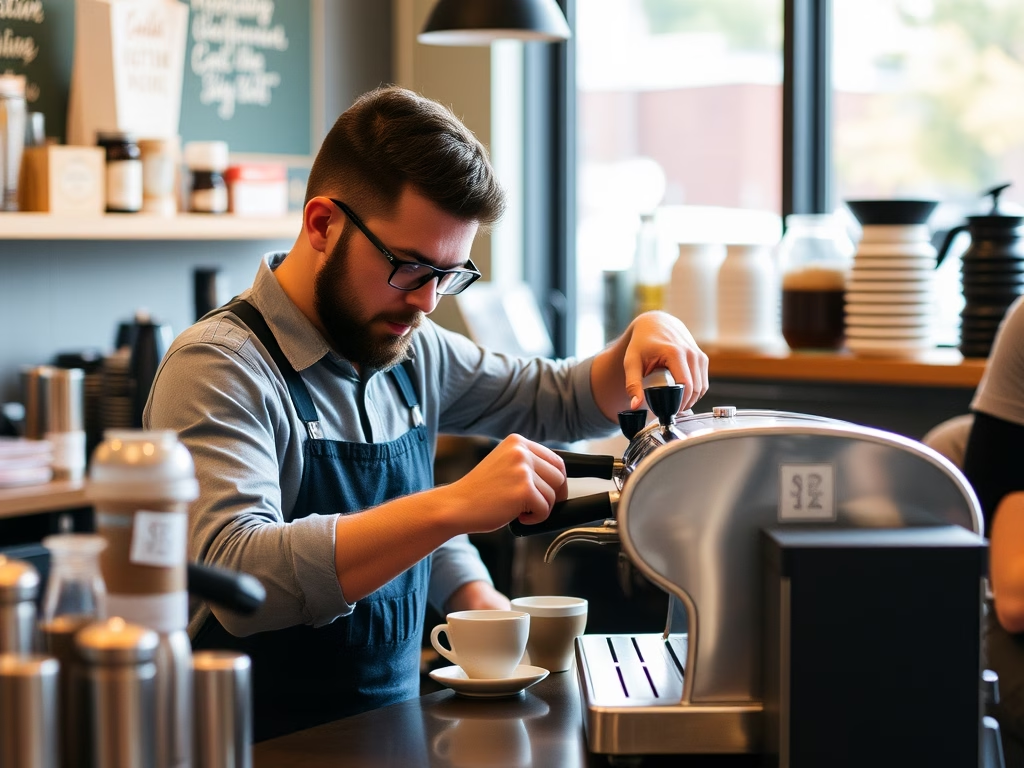Table of Contents
- What’s the Deal with Coffee Futures?
- Understanding Key Coffee Contract Specs
- Coffee Futures: What Makes the Price Go Up and Down?
- Coffee Futures: What’s the Vibe?
- Arabica vs. Robusta: What’s the Price Difference?
- Making Money Trading Coffee: The Lowdown
- Don’t Get Burned: Managing Risk in Coffee Futures
- Staying Sharp: Where to Get Your Coffee Futures Fix
What’s the Deal with Coffee Futures?
flowchart TD
classDef green fill:#8BC34A,stroke:#333,stroke-width:2px,color:white
classDef blue fill:#4CAF50,stroke:#333,stroke-width:2px,color:white
classDef teal fill:#009688,stroke:#333,stroke-width:2px,color:white
classDef dark fill:#00796B,stroke:#333,stroke-width:2px,color:white
classDef darker fill:#004D40,stroke:#333,stroke-width:2px,color:white
A[Coffee Cherry Harvest] -->|Picking| B[Sorting]
B -->|Quality Check| C[Processing Method]
C -->|Wet/Washed| D[Fermentation]
C -->|Dry/Natural| E[Sun Drying]
C -->|Honey/Pulped Natural| F[Partial Mucilage Removal]
D --> G[Washing]
G --> H[Drying]
E --> H
F --> H
H -->|Moisture Content 10-12%| I[Hulling/Milling]
I --> J[Grading & Sorting]
J --> K[Storage]
K --> L[Roasting]
L --> M[Packaging]
class A,B green
class C,D,E,F blue
class G,H,I teal
class J,K dark
class L,M darker
Coffee Bean Processing Flowchart: From Harvest to Packaging

Let’s explore What’s the Deal with Coffee Futures? in more detail. This is an important aspect of coffee futures pricing that deserves attention.
Coffee ‘C’ Contract: The Big Kahuna
Okay, so you wanna know about coffee futures, huh? Think of it like this: it’s a way to bet on where coffee prices are headed. The main thing you need to know about is the Coffee ‘C’ contract. This thing is basically the heavyweight champ when it comes to Arabica coffee pricing. Seriously, it sets the standard worldwide. It’s what everyone looks at to figure out how much those green coffee beans are gonna cost.
Last week, I was trying to explain this to my neighbor, Bob, who thinks Folgers is gourmet. It…did not go well. He kept asking if he could get free coffee by buying the contracts. Nope, Bob, that’s not how it works!
Where Does the Coffee Actually Come From?
Here’s the slightly complicated part. The Coffee ‘C’ contract isn’t just about any old coffee. It’s about *exchange-grade* green beans, which means they meet certain standards. And these beans have to come from one of 20 specific countries. They get delivered to licensed warehouses in ports in the U.S. and Europe. Oh, and depending on which port and exactly what kind of coffee it is, there are premiums or discounts added. Think of it like airline baggage fees, but for coffee. Kinda annoying, honestly.
Understanding Key Coffee Contract Specs

Understanding coffee ‘C’ contract specs is crucial, even if you’re just speculating on price fluctuations rather than taking physical delivery. Pay close attention to the premiums and discounts associated with different ports and coffee types, as these differentials significantly impact trading prices and can make or break your strategy.
Let’s explore Understanding Key Coffee Contract Specs in more detail. This is an important aspect of coffee futures pricing that deserves attention.
ICE: Where the Magic (and Money) Happens
If you’re gonna play this game, you gotta know about ICE – the Intercontinental Exchange. It’s *the* place where coffee futures contracts are traded. Think of it as the New York Stock Exchange, but for coffee. Or, you know, a less stressful version, hopefully! I say hopefully because, man, the stock market has been wild lately. Did you see what happened with Gamestock? Anyway, back to coffee…
Physical Delivery…With a Twist
So, the Coffee ‘C’ contract is all about the *physical* delivery of those exchange-grade green beans we talked about. But here’s the kicker: most people trading these contracts aren’t actually planning on taking delivery of a giant pile of coffee! They’re speculating on the price. It’s more about the *idea* of coffee changing hands. Which is a little weird if you think about it too much. Still, those stated premiums and discounts for different ports and types of coffee? Super important. They can really change the game.
I’m not 100% sure about this, but I think there is also a way to get a discount if you name your firstborn “Java.” Or, maybe I just dreamed that. Anyway… Getting into coffee futures might sound a little intimidating, but it’s honestly pretty interesting once you get the hang of it. And hey, who knows? Maybe you’ll even make some money. Or at least learn a lot about coffee! Worth a shot, right?
Coffee Futures: What Makes the Price Go Up and Down?

Coffee futures prices are influenced by a complex interplay of factors, with weather patterns in key growing regions like Brazil significantly impacting supply and demand. Economic factors such as the strength of the US dollar and crude oil prices also play a crucial role by affecting transportation costs and investor sentiment, ultimately impacting the price you pay for your daily cup.
Let’s explore Coffee Futures: What Makes the Price Go Up and Down? in more detail. This is an important aspect of coffee futures pricing that deserves attention.
Weather’s Wild Ride: How Rain Affects Your Coffee
Okay, so you wanna know what messes with coffee prices? Well, weather is a HUGE one. Think about it: coffee beans come from plants, right? And plants need, like, the *right* amount of sun and rain. Last week, I was trying to explain this to my nephew, and he just stared at me blankly. Kids these days!
Anyway, if the weather goes bonkers in Brazil—and let me tell you, Minas Gerais is where a ton of Arabica coffee comes from—it’s gonna mess with the price. Word on the street is that forecasts of “widespread showers” there can actually *lower* coffee prices. Why? Because everyone thinks there’ll be a bumper crop. But if it’s too dry? Oh man, buckle up! Prices can jump ’cause everyone freaks out about not having enough coffee. Honestly, it’s a bit dramatic.
Not Enough or Too Much: The Coffee Supply Game
It’s all about supply and demand, baby! If there’s a ton of coffee beans lying around, prices drop. Like when Marex Solutions (whoever THEY are) said we’re gonna have a coffee surplus in 2025/26. They’re saying it’s gonna be way bigger than this year. That kinda news makes coffee traders nervous, and prices can fall. I’m not 100% sure I totally buy their numbers, but hey, they’re the “experts,” right?
On the flip side, if places that store coffee beans (like the ICE) start running low, especially on the Robusta kind…well, that can stop prices from falling too much. It’s like a tug-of-war. I remember back in 2020, during that whole toilet paper shortage, it was kinda the same thing. Except with coffee. And less pooping involved.
Money Talks: How Dollars and Oil Change Coffee Prices
Don’t even get me started on the economy. It’s all connected, even to your morning cup of joe! So the US dollar index, that thing that tells you how strong the dollar is compared to other currencies? Yeah, it can play a role. A weaker dollar can actually *help* coffee prices sometimes. I think it’s because it makes coffee cheaper for other countries to buy? Something like that.
And get this: even crude oil prices can affect coffee! I know, it sounds crazy, but think about it. Oil is used to ship coffee beans around the world. So if oil prices go up, it costs more to transport coffee. Which means…yep, you guessed it, higher prices at the store. It’s all one big, messy, interconnected web! Plus, I honestly think that the price of crude oil influences the mood of investors which can impact coffee futures.
Look, I’m no economist, and I definitely dropped my Roomba on Tuesday and had to spend an hour putting it back together, but these are the things that can make coffee futures a wild ride. And you know what? Maybe you should grab a cup and give it a try. What’s the worst that could happen?
Coffee Futures: What’s the Vibe?

* **COT Reports:** Think of Commitment of Traders (COT) reports as a sneak peek into hedge funds’ coffee strategies. They reveal whether big players are betting prices will rise (long positions) or fall (short positions), offering clues about market sentiment.
* **Chart Patterns:** While not foolproof, technical analysis and chart patterns like “bullish engulfing” can suggest potential entry and exit points for trades. But remember, the market is volatile, and patterns aren’t always reliable.
* **Independent Analysis:** While resources like Barchart Opinion’s trading guide can be helpful, always do your own research. Blindly following signals can be risky, and forming your own informed decisions is crucial for navigating the coffee futures market.
Let’s explore Coffee Futures: What’s the Vibe? in more detail. This is an important aspect of coffee futures pricing that deserves attention.
COT Reports: What the Big Guys Are Doing
Okay, so COT reports… Commitment of Traders reports. Sounds boring, right? But trust me, they can give you a peek into what the big players – like hedge funds – are betting on when it comes to coffee futures. Think of it like eavesdropping on their super-secret coffee strategy meetings. Last week, I was trying to understand what was going on with the arabica market and dove deep into the COT reports. It’s kinda like reading tea leaves, but with way more data and less herbal aroma.
Basically, these reports show how many contracts these big funds are holding, both betting the price will go up (long positions) and betting it’ll go down (short positions). If you see a bunch of hedge funds suddenly going “long” on coffee, meaning they’re buying up contracts hoping the price will rise, that usually means they’re feeling bullish. And that can put upward pressure on prices. It’s not a guarantee, of course, but it’s a good clue.
Chart Patterns: Coffee Crystal Ball Gazing
Alright, let’s talk charts! Now, I’m no Van Gogh, but I can stare at a coffee futures chart for a surprisingly long time. All those squiggly lines and candlestick patterns… they can actually tell you something! It’s called technical analysis. I’m not 100% sure this always works, but hey, it’s worth a shot. Like, if you see a “bullish engulfing” pattern (look it up!), that *might* signal a good time to buy. Or not. The market is a fickle beast, ya know?
Barchart Opinion’s trading guide is something I check out sometimes. They have these buy/sell signals based on technical analysis. But, and this is a HUGE but, don’t just blindly follow them! Signal strength matters. Plus, I think their models are often overpriced – just my two cents. I honestly think you should always do your own research. Speaking of research, I dropped my Roomba on Tuesday and it hasn’t been the same since. Anyway, back to coffee…
Seriously though, technical analysis can help you spot potential entry and exit points. It’s like having a map to the coffee bean treasure – except the map is written in confusing symbols and the treasure might be empty. Still, it’s a tool. Use it wisely.
So, what’s the takeaway here? Market trends and sentiment are crucial. Keep an eye on those COT reports and get familiar with chart patterns. It’s not foolproof, but it’s way better than just guessing. I remember back in 2020, when everyone was panic-buying toilet paper, I wish I’d known more about futures then! I could have made a killing… or lost my shirt. Who knows? But still, it’s a wild ride, and hey, maybe you should give coffee futures pricing a shot? Just don’t blame me if you end up needing a LOT more coffee to cope!
Arabica vs. Robusta: What’s the Price Difference?

Let’s explore Arabica vs. Robusta: What’s the Price Difference? in more detail. This is an important aspect of coffee futures pricing that deserves attention.
Where it Grows Matters: Weather and Coffee Prices
So, Arabica and Robusta – they’re like the Beyoncé and Kelly Rowland of the coffee world, right? Both awesome, but totally different. And their prices? Man, those can swing wildly, and a lot of it comes down to where they’re grown. Arabica’s super sensitive to what’s happening in Brazil. If there’s a frost, or a drought, BAM! Arabica prices go nuts. I remember back in… was it 2021? Yeah, 2021. There was this huge frost in Brazil, and I swear, you could practically *hear* the price of Arabica futures going up! It was insane. I almost bought some, but chickened out. Regrets!
Robusta’s a bit different. It’s tougher, grows in more places, but Vietnam is the big kahuna there. And get this – I saw a report that Vietnam’s coffee exports jumped like 6.6% recently. That’s a LOT of coffee. More coffee usually means lower prices, but it’s way more complicated than that, of course. It’s all about supply and demand. Like, remember when everyone was panic-buying toilet paper in 2020? Same kinda deal, but with coffee… sort of.
Who Drinks What? Demand and Coffee Types
Okay, so, Arabica is like the fancy pants coffee. Think your boujee lattes and espressos. It’s smoother, more flavorful, the whole nine yards. Robusta’s the workhorse. It’s got more caffeine, a stronger, sometimes bitter taste, and it’s often used in instant coffee and blends. You know, the stuff you chug when you’re pulling an all-nighter trying to finish that TPS report… or, you know, writing a blog post at the last minute. Not that I’d know anything about that…
What people *want* to drink also messes with prices. If everyone suddenly decided they only wanted super-fancy, single-origin Arabica (which, let’s be real, is probably overpriced anyway – I said it!), then Robusta prices might take a hit. But if there’s a huge demand for cheap instant coffee… well, you get the picture. I honestly think that the instant coffee market is going to stay strong. It is just too easy to make!
It’s a wild world, this coffee futures thing. I’m still learning, honestly. But hey, maybe you should check it out! Who knows, maybe you’ll be the next coffee futures guru. Just, uh, maybe start small, okay? And don’t blame me if you lose your shirt! Unless… you win… then maybe send me a coffee!
Making Money Trading Coffee: The Lowdown

**Option 1 (Focus on Spreads):**
Coffee spread trading can offer nuanced opportunities beyond simple price direction bets. Consider monitoring related commodities like sugar, and even seemingly unrelated ones like Chicago Wheat, to gauge market sentiment and potentially inform your spread strategies.
**Option 2 (Focus on Risk Management):**
Trading coffee futures, whether going long/short or using spreads, carries inherent risks due to market volatility. Start with small positions, thoroughly research potential strategies, and avoid over-reliance on complex (and often overpriced) trading models.
**Option 3 (Focus on Learning from Experience):**
The coffee futures market can be unpredictable; even well-researched short positions can be blindsided by unforeseen events like frost. Embrace a learning mindset, manage risk carefully, and be prepared to adjust your strategies based on real-world outcomes.
Let’s explore Making Money Trading Coffee: The Lowdown in more detail. This is an important aspect of coffee futures pricing that deserves attention.
Going Long or Short on Coffee Beans
So, you wanna play the coffee futures game? First thing’s first: you gotta decide if you think prices are going up or down. If you think coffee’s gonna get more expensive, you “go long.” That means you’re buying a futures contract, betting that when the contract expires, you can sell it for more than you paid. Easy peasy… in theory!
Now, if you think coffee prices are headed south – maybe Brazil’s about to have a killer harvest – you “go short.” This means you’re selling a futures contract, hoping to buy it back later at a lower price before it expires. It’s like betting against coffee. I dunno, seems kinda harsh, doesn’t it? Like rooting for a bad crop. But hey, it’s business.
Last week, I tried going short on a small position after reading a report about oversupply. It looked promising, but then BAM! A sudden frost in Minas Gerais sent prices soaring. I ended up covering my position for a small loss. Ouch. That’s the futures market for ya – gotta be ready for anything!
Coffee Spreads: It’s Not Just for Toast
Okay, this is where it gets a little fancier. Instead of just betting on the price of coffee going up or down, you can play the “spread.” A spread is basically betting on the difference in price between two different coffee contracts. Like, say you buy a contract that expires in July and sell one that expires in September. You’re betting that the price difference between those two contracts will change in your favor.
These are also called calendar spreads. I find it helpful to look at other commodities’ calendar spreads, too. For instance, I keep an eye on the sugar calendar spread because sugar and coffee prices can sometimes be related – especially in Brazil, where they grow both. And get this: a Chicago Wheat calendar spread? Yeah, sometimes that even can give you a sense of the overall market mood. I’m not 100% sure why, but it’s worked for me a few times. Don’t ask me for all the details, I’m not a wizard!
One thing I’ve noticed – and this is a bit of a controversial opinion – is that a lot of these fancy trading models are overpriced. They promise the moon, but really, it’s just a bunch of complicated math that doesn’t always work in the real world. I’m not saying they’re useless, but don’t bet the farm on them, ya know?
Trading futures can be a wild ride. Just remember to do your homework, understand the risks, and don’t be afraid to start small. Maybe with the money you find under the couch cushions! Who knows, you might just end up brewing up some serious profits. Just don’t blame me if you lose your shirt, okay?
Don’t Get Burned: Managing Risk in Coffee Futures

Effectively managing risk in coffee futures requires a multi-faceted approach: utilize stop-loss orders to limit potential losses, carefully determine position sizes to control capital exposure (aiming for no more than 2% risk per trade), and diversify your investments to avoid over-concentration in a single asset. Continuous due diligence and risk awareness are also crucial for informed decision-making in this volatile market.
Let’s explore Don’t Get Burned: Managing Risk in Coffee Futures in more detail. This is an important aspect of coffee futures pricing that deserves attention.
Coffee’s Wild Ride: Volatility and Your Money
Okay, so coffee futures? They can be kinda like riding a rollercoaster…a caffeinated rollercoaster. The price can jump up and down like crazy – that’s volatility. And all that jumping around means you gotta be super careful with your margin. Think of margin as the “good faith” money you put down to trade. If the price swings against you too much, your broker might ask for more margin. This is called a “margin call,” and trust me, you do *not* want one of those. Last week, I almost got margin called because I was too confident about a short position – lesson learned! I was watching the “Masked Singer” and totally missed it. Don’t be like me.
Something else to keep an eye on is implied volatility (IV). It’s basically a guess at how much the price *might* move in the future. IV Rank and Percentile can help you see if the current IV is high or low compared to its past. If IV is high, it might be a good time to sell options (but that’s a whole other can of worms we’ll get into later). Honestly, I think some of these models are overpriced, but that’s just my opinion.
Stop! In the Name of Profit (and Avoiding Losses)
Seriously, you gotta use stop-loss orders. These are like safety nets. You tell your broker, “If the price drops to *this* point, sell my position automatically.” It limits how much you can lose. Position sizing is also key – don’t bet the farm on one trade! Figure out how much you’re willing to risk on *each* trade, and size your position accordingly. I usually aim for risking no more than 2% of my capital on a single trade. But hey, everyone’s different.
Also, don’t put all your eggs in one basket. Maybe think about spreading your investments around. Like, don’t *just* trade coffee futures. Maybe dabble in cocoa or sugar, or even stocks, or something. Diversification is your friend. Unless you’re like, *really* sure about something…which I never am, haha. I dropped my Roomba on Tuesday and it broke, so who am I to be sure of anything?
Look, trading futures isn’t a get-rich-quick scheme. It takes work, and understanding the risks is half the battle. So, do your homework, manage your risk, and maybe, just maybe, you’ll make some money. And hey, even if you don’t, at least you’ll have a good story to tell over a cup of…you guessed it…coffee! Speaking of which, I’m going to Starbucks. They are releasing new holiday cups on November 2nd – and I need to try the Peppermint Mocha!
Staying Sharp: Where to Get Your Coffee Futures Fix

Let’s explore Staying Sharp: Where to Get Your Coffee Futures Fix in more detail. This is an important aspect of coffee futures pricing that deserves attention.
Coffee Prices Now: Barchart and Beyond
Okay, so you’re ready to dive into coffee futures. Awesome! But where do you actually *see* what’s going on? Well, Barchart.com is a pretty good place to start. They’ve got real-time prices, news, and all sorts of analysis that can make your head spin (in a good way, hopefully). MarketWatch is also decent – kinda like Barchart’s slightly more buttoned-up cousin. I usually check both, just to be sure. Last week, I was convinced coffee was gonna tank based on one site, but the other showed a different story. Saved me a few bucks, I think. Or maybe I just got lucky. Who knows?!
Digging Deeper: ICE to Meet You
Want to get super serious? Head over to the ICE (Intercontinental Exchange) website. It’s not the prettiest site, I’ll warn you now, but it’s got all the official contract specs. Think of it as the rulebook for coffee futures. You can find out exactly what you’re buying or selling – bean type, quantity, all that jazz. It’s a little dry, but important. It’s like reading the instructions before you assemble IKEA furniture. You *could* skip it, but you’ll probably regret it.
The Smart Stuff: Expert Reports and Weather Woes
Now, here’s where things get interesting. It’s not enough to just see the prices; you need to understand *why* they’re moving. I’m not 100% sure, but I think I’m right! Keep an eye out for reports from places like Marex Solutions. They do some pretty deep dives into global coffee supply and demand. Are we gonna have a bumper crop in Brazil? Is Vietnam facing a drought? These reports try to answer those questions.
And speaking of weather, don’t underestimate the power of a good forecast. Somar Meteorologia is one source that I check. They’re all about South American weather, which, let’s face it, is kinda crucial for coffee. A sudden frost in Minas Gerais (Brazil) can send coffee prices soaring faster than you can say “double espresso!” I remember back in… gosh, must have been 2021? A freak hailstorm wiped out a huge chunk of the crop, and the futures market went bananas. Seriously. I made a killing. Okay, maybe not a *killing*, but enough to buy a new Roomba after I accidentally dropped the old one down the stairs on Tuesday. Oops.
Honestly, there’s a ton of info out there, and it can be overwhelming. Just start with the basics, follow a few key sources, and don’t be afraid to ask questions. And maybe, just maybe, you’ll be sipping on some profits soon. Who needs a pumpkin spice latte when you’ve got coffee futures? (Okay, I still like pumpkin spice lattes…don’t judge!).

